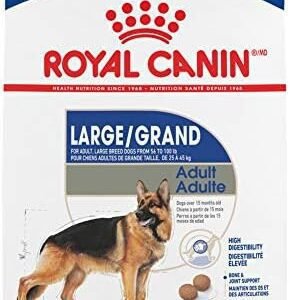I. Introduction
In the realm of canine healthcare, there are various medications that play pivotal roles in alleviating health issues and enhancing the well-being of our furry companions. One such medication is Propranolol, which serves as a crucial tool in the treatment of certain canine conditions. In this comprehensive guide, we’ll delve into the world of Propranolol for dogs, exploring its benefits, recommended dosage, potential side effects, and much more.

Propranolol is not merely a word, but a lifeline for dogs facing specific health challenges. To provide pet owners and veterinarians with easy access to vital information, we have crafted a well-structured table summarizing essential drug details for veterinary use. This table encompasses common names, drug types, its purposes, methods of administration, and FDA approval status, ensuring clarity and ease of reference.
| Common Names | Drug Type | Used For | Administered | FDA Approved |
|---|---|---|---|---|
| Propranolol | Beta-blocker | Various Conditions | Tablets, Oral Liquid | Yes |
Important: Before proceeding further, it’s essential to underscore the importance of consulting a veterinarian before administering any medication, including Propranolol, to dogs. Your veterinarian is your trusted partner in ensuring your dog’s well-being and can provide guidance tailored to your pet’s specific needs. This article serves as an informative resource but should not replace professional veterinary advice.
Table of Contents
Purpose of the Article:
The primary purpose of this article is to offer accurate and comprehensive information about Propranolol for dog owners. By the end of this guide, readers will gain a deeper understanding of this medication, its applications in canine healthcare, and how it can benefit their four-legged companions. We emphasize the importance of informed decisions and the role of professional guidance in ensuring the well-being of our beloved pets. In the sections that follow, we’ll explore Propranolol in greater detail, leaving no question unanswered.
II. Understanding Propranolol
In this section, we will embark on a journey to understand Propranolol, its mechanisms of action in a dog’s body, and the various conditions and ailments it can effectively treat or manage.
1. What is Propranolol?
Propranolol is a medication that belongs to the class of drugs known as beta-blockers. These medications play a vital role in canine healthcare by affecting specific bodily functions. Propranolol, to be precise, is a non-selective beta-adrenergic antagonist. In simpler terms, it’s a medication that helps regulate certain processes within a dog’s body, primarily those involving the nervous system and the heart.
This medication works by blocking the action of epinephrine (adrenaline) and norepinephrine, which are stress hormones. By doing so, it reduces the heart rate, dilates blood vessels, and lowers blood pressure. In human medicine, Propranolol is used to treat various conditions, including hypertension (high blood pressure), angina (chest pain), and irregular heart rhythms.
2. How Does Propranolol Work in Dogs’ Bodies?
Propranolol’s mode of action in dogs’ bodies is somewhat similar to its effects in humans. It functions as a non-selective beta-blocker, meaning it inhibits the activity of both beta-1 and beta-2 adrenergic receptors. Here’s how it works:
Reducing Heart Rate: One of the primary effects of Propranolol is to decrease the heart rate. By blocking the action of epinephrine on the heart, it slows the heartbeat. This can be beneficial in situations where a dog has a rapid or irregular heartbeat, as it helps to stabilize the heart’s rhythm.
Lowering Blood Pressure: Propranolol also acts to dilate blood vessels, which allows for easier blood flow and ultimately leads to a reduction in blood pressure. This can be beneficial in cases where high blood pressure poses a risk to a dog’s health.
Alleviating Anxiety: In addition to its cardiovascular effects, Propranolol has anxiolytic properties, meaning it can reduce anxiety. It works by blocking the action of adrenaline, which is associated with the “fight or flight” response. This can be helpful for dogs that experience anxiety or situational stress.
3. Common Conditions and Ailments in Dogs that Propranolol Can Treat or Manage
Propranolol is used in veterinary medicine to address several conditions and ailments in dogs. Some of the common issues it can treat or manage include:
Arrhythmias: Irregular heart rhythms can be a serious concern. Propranolol can help stabilize the heart’s rhythm.
Hypertension: High blood pressure is not exclusive to humans. Dogs can also develop hypertension, which may require medication like Propranolol.
Anxiety: Propranolol’s anxiolytic properties make it useful in managing anxiety-related issues in dogs. It can be prescribed in situations like separation anxiety or phobias.
Performance Anxiety: Some working or performance dogs may experience anxiety before competitions or events. Propranolol can help reduce anxiety symptoms in such cases.
Thyroid Storm: Propranolol may be used as part of the treatment for thyroid storms, which can occur in dogs with hyperthyroidism.
Portal Hypertension: Dogs with liver issues like cirrhosis may develop portal hypertension. Propranolol can help manage this condition by reducing the pressure in the portal vein.
It’s important to note that the use of Propranolol in dogs should always be under the guidance of a veterinarian. The dosage and treatment plan will be tailored to the specific needs and health conditions of the individual dog. Additionally, as with any medication, there can be potential side effects and contraindications that should be considered. In the subsequent sections of this article, we will explore these aspects in greater detail.
III. Benefits of Propranolol for Dogs
In this section, we will delve into the significant benefits that Propranolol offers to dogs. This medication, which belongs to the class of beta-blockers, has proven to be highly effective in managing specific canine health issues and improving the overall quality of life for our four-legged friends.
1. Effectiveness in Treating Specific Canine Health Issues
Propranolol is valued in veterinary medicine for its efficacy in treating several health issues in dogs. Let’s explore some of these conditions where Propranolol plays a crucial role:
Arrhythmias: Irregular heart rhythms, such as ventricular tachycardia or atrial fibrillation, can pose a significant health risk to dogs. Propranolol’s ability to stabilize the heart’s rhythm helps ensure that the heart beats in a regular and coordinated manner. By doing so, it reduces the risk of life-threatening arrhythmias.
Hypertension: Dogs can develop high blood pressure, especially in cases of kidney disease or certain endocrine disorders. Hypertension can lead to organ damage, including the kidneys, eyes, and the heart. Propranolol’s ability to lower blood pressure makes it a valuable tool in managing hypertension and preventing these complications.
Anxiety: Many dogs experience anxiety in various situations, from separation anxiety when their owners leave, to noise phobias during thunderstorms or fireworks. Propranolol, with its anxiolytic properties, helps alleviate anxiety symptoms by reducing the effects of adrenaline. This can significantly improve a dog’s emotional well-being.
Performance Anxiety: Working dogs, such as those involved in competitive sports, may experience performance anxiety, leading to decreased performance and discomfort. Propranolol can help in such situations by reducing the physical symptoms of anxiety, such as rapid heart rate and trembling.
Portal Hypertension: Dogs with liver diseases, like cirrhosis, can develop portal hypertension. This condition can lead to severe complications, including bleeding from varices. Propranolol can help lower portal vein pressure, reducing the risk of such complications.
2. How Propranolol Can Improve Dogs’ Quality of Life
The benefits of Propranolol extend beyond addressing specific health issues. The improvement in a dog’s quality of life can be remarkable when this medication is used thoughtfully.
Enhanced Comfort: Dogs with irregular heart rhythms often experience discomfort, weakness, and fatigue. By regulating the heartbeat, Propranolol provides comfort and allows dogs to maintain their usual activities.
Anxiety Reduction: For anxious dogs, life can be stressful and challenging. Propranolol can alleviate the physical symptoms of anxiety, such as a racing heart and trembling, providing a sense of calm and relaxation.
Prevention of Complications: In conditions like hypertension and portal hypertension, Propranolol is crucial for preventing potentially life-threatening complications. By lowering blood pressure or portal vein pressure, it helps protect vital organs and ensures a longer, healthier life.
- Improved Performance: Working dogs, such as those in canine sports or law enforcement, can experience enhanced performance without the hindrance of performance anxiety.
While Propranolol offers a multitude of benefits to dogs, it’s essential to highlight the importance of consulting a veterinarian before administering this medication. The appropriate dosage and treatment plan should be determined by a veterinary professional based on the dog’s specific condition and needs.
In the following sections, we will discuss the dosage guidelines for Propranolol, directions for use, potential side effects, and precautions, ensuring that dog owners are well-informed about this medication and its safe administration.
IV. Administering Propranolol to Dogs
Propranolol is a medication that can provide immense benefits to dogs when administered correctly. In this section, we will explore the crucial aspects of administering Propranolol to your canine companion. This includes dosage guidelines, the frequency of administration, directions for use, and the importance of adhering to prescribed dosages.
1. Dosage Guidelines: Determining the Right Dosage
Determining the correct dosage of Propranolol for your dog is a crucial step to ensure their safety and the effectiveness of the medication. This is a task that should only be undertaken by a veterinarian who will take into account your dog’s size, age, overall health, and the specific condition being treated.
Dosages can vary significantly from one dog to another. For instance, a small dog with heart arrhythmia may require a different dose than a large dog with hypertension. Your veterinarian will perform a comprehensive evaluation and select the appropriate dosage that aligns with your dog’s unique needs.
Never attempt to calculate the dosage yourself or use Propranolol prescribed for another dog, as this can lead to incorrect dosing and potential harm. Always consult with a qualified veterinarian who has a deep understanding of your dog’s health.
2. Frequency of Administration
The frequency of Propranolol administration can vary based on the condition being treated. Typically, it is given one to three times a day, depending on the veterinarian’s recommendations. For some dogs, especially those with heart arrhythmias, a consistent, daily dose is necessary to stabilize their heart rate. In other cases, such as performance anxiety, the medication might be given on an as-needed basis.
The veterinarian will specify the ideal frequency, and it’s crucial to adhere to this schedule diligently. Missing doses or altering the schedule can impact the medication’s effectiveness. If you have any concerns or difficulties in administering Propranolol to your dog, do not hesitate to contact your veterinarian for guidance.
3. Directions for Use: Tips for Administering Propranolol to Dogs
Administering medication to dogs can be a challenging task, especially if your pet is uncooperative or difficult to medicate. Here are some tips to make the process smoother:
Hide in Treats: Propranolol tablets can be concealed in treats or soft foods that your dog enjoys. However, ensure your dog consumes the entire treat to guarantee they receive the full dose. Not all medications should be divided within treats, so always consult your veterinarian before doing so.
Crush and Mix: In cases where hiding tablets isn’t feasible, some Propranolol tablets can be crushed and mixed with a small amount of your dog’s regular food. Again, consult your veterinarian to ensure this is suitable for the specific Propranolol formulation you have.
Use a Pill Dispenser: Pill dispensers are helpful tools that allow you to place the medication directly into your dog’s throat, ensuring they swallow it. Be cautious and gentle while using this method to avoid any discomfort for your dog.
- Reward System: Offer positive reinforcement, such as praise or treats, after administering the medication. This helps create a positive association with the process.
4. Importance of Adhering to Prescribed Dosages
Consistency in administering Propranolol is vital. This medication is used to manage specific conditions, and maintaining steady blood levels is necessary for its effectiveness. If you miss a dose, it can lead to a lapse in the medication’s action and may not control the underlying condition properly. Always follow your veterinarian’s instructions closely.
However, if you accidentally miss a dose, do not double the next dose to compensate. Instead, contact your veterinarian for guidance on how to proceed.
In the next section, we will explore potential side effects and precautions related to the use of Propranolol in dogs, as well as how to identify severe reactions.
V. Potential Side Effects and Precautions
Propranolol is a valuable medication for managing various health conditions in dogs, but like any pharmaceutical, it can have side effects and require precautions. In this section, we will explore the potential side effects of Propranolol, how to identify severe or adverse reactions, precautions for pregnant or lactating dogs, and any interactions with other medications or supplements.
1. Common Side Effects of Propranolol in Dogs
Propranolol is generally well-tolerated in dogs when administered according to the veterinarian’s instructions. However, some common side effects may occur. These side effects are typically mild and temporary, but it’s essential to be aware of them:
Drowsiness: One of the most common side effects of Propranolol is drowsiness. You may notice that your dog appears more tired than usual. This drowsiness is often temporary and may decrease as your dog’s body adjusts to the medication.
Gastrointestinal Upset: Some dogs may experience mild gastrointestinal issues, such as nausea, vomiting, or diarrhea. These symptoms usually resolve on their own or can be managed by giving the medication with food.
Slowed Heart Rate: Propranolol is primarily used to lower heart rate and blood pressure. A lowered heart rate is an intended effect, but in some cases, it may be excessively slow. If you observe any signs of bradycardia (unusually slow heart rate), contact your veterinarian immediately.
2. Identifying Severe or Adverse Reactions
While rare, severe or adverse reactions to Propranolol can occur. It’s crucial to be vigilant and act promptly if you notice any of the following signs:
Significant Lethargy: If your dog becomes extremely lethargic or unresponsive, it could be indicative of a severe reaction to the medication. Seek immediate veterinary assistance.
Breathing Difficulties: Propranolol can sometimes lead to respiratory distress. If your dog is struggling to breathe, with labored or noisy breathing, contact your veterinarian or an emergency clinic right away.
Allergic Reactions: Allergic reactions can manifest as hives, facial swelling, or intense itching. In rare cases, dogs may exhibit anaphylactic reactions, which are life-threatening. Seek immediate emergency care if you suspect an allergic reaction.
- Signs of Gastrointestinal Hemorrhage: Dark, tarry stools or vomiting blood are alarming signs that should not be ignored. These can be indicative of gastrointestinal bleeding, which could be associated with the use of Propranolol.
3. Precautions for Pregnant or Lactating Dogs
Propranolol is not typically recommended for use in pregnant dogs due to potential risks to the developing fetuses. If a dog becomes pregnant while on Propranolol, it is essential to consult with a veterinarian to discuss potential alternatives and ensure the safety of both the mother and her litter.
For lactating dogs, Propranolol can pass into the milk, potentially affecting nursing puppies. If Propranolol use is necessary, consult with your veterinarian to establish appropriate precautions or explore alternative feeding options for the puppies.
4. Interactions with Other Medications or Supplements
Propranolol can interact with various other medications or supplements your dog may be taking. Some interactions can enhance the effects of Propranolol, while others may diminish them. It’s crucial to inform your veterinarian of all medications, including over-the-counter drugs and supplements, that your dog is receiving.
Common drug interactions with Propranolol may involve:
Other Heart Medications: Combining Propranolol with other heart medications may enhance its effect, potentially leading to dangerously low heart rates or blood pressure.
Anesthesia: Propranolol may increase the sensitivity of your dog to anesthesia. It’s crucial to inform the veterinarian if your dog is on Propranolol before any surgical or dental procedures.
Antacids: Antacids may affect the absorption of Propranolol. It’s advisable to administer Propranolol at least two hours before or after giving antacids.
- Supplements and Herbal Remedies: Certain supplements and herbal remedies may interact with Propranolol. Always consult your veterinarian before introducing new supplements or herbal treatments to your dog’s routine.
In the next section, we will emphasize the significance of consulting a veterinarian when using Propranolol in dogs. We will also discuss overdose information and when to call the vet, as well as how to discuss Propranolol with your veterinarian and seeking a second opinion when necessary.
VI. Consultation with a Veterinarian
In the administration of medications like Propranolol to dogs, the involvement of a qualified veterinarian is not just a suggestion; it’s an absolute necessity. This section will underline the critical importance of seeking professional guidance when considering Propranolol for your canine companion. It will also cover essential information about overdose, signs or symptoms that should prompt you to call the vet, how to discuss Propranolol with your veterinarian, and when it’s appropriate to seek a second opinion.
1. Emphasizing the Importance of Professional Guidance
When it comes to your dog’s health, professional guidance is irreplaceable. Propranolol is a potent medication that can significantly impact your dog’s cardiovascular system. Only a veterinarian can accurately diagnose your dog’s condition, determine the appropriate treatment, and prescribe the correct dosage of Propranolol.
Your veterinarian will take into account your dog’s specific health needs, size, age, and any preexisting medical conditions. They will also consider the potential interactions with other medications your dog might be taking. All of these factors are crucial in ensuring the safe and effective use of Propranolol.
2. Overdose Information and Possible Toxicity/Effect
Overdosing on Propranolol can have severe consequences. It’s crucial to adhere strictly to the dosage prescribed by your veterinarian and to keep the medication out of your dog’s reach. In case of a suspected overdose, it is imperative to seek immediate veterinary care.
Overdose symptoms may include:
- Bradycardia: A dangerously slow heart rate.
- Hypotension: A significant drop in blood pressure.
- Lethargy: Unusual tiredness or weakness.
- Breathing Difficulties: Labored or irregular breathing.
- Fainting or Collapse: Loss of consciousness.
Propranolol overdose can be life-threatening, and rapid intervention is essential for the best chance of a successful outcome. The treatment for overdose typically involves supportive care to stabilize heart rate and blood pressure.
3. Signs or Symptoms: When to Call the Vet
Understanding when to call your veterinarian is essential in ensuring the well-being of your dog. With Propranolol, there are specific signs or symptoms that should prompt an immediate call to your veterinarian. These include:
Extreme Lethargy: If your dog is excessively lethargic, weak, or unresponsive, this could indicate a problem with the medication.
Breathing Issues: Labored or shallow breathing, especially if accompanied by wheezing or coughing, should be addressed promptly.
Unusual Heart Rate: A severely slowed heart rate (bradycardia) or irregular heart rhythms necessitate an immediate consultation with your veterinarian.
Gastrointestinal Distress: If your dog is vomiting frequently, experiencing severe diarrhea, or passing black, tarry stools, it’s vital to consult your veterinarian.
Allergic Reactions: Any signs of allergic reactions, such as hives, facial swelling, itching, or difficulty breathing, require immediate attention.
4. How to Discuss Propranolol with Your Veterinarian
Effective communication with your veterinarian is a fundamental aspect of your dog’s healthcare. When discussing Propranolol with your veterinarian, consider the following tips:
Be Informed: Familiarize yourself with your dog’s medical history, current medications, and any relevant symptoms or behaviors you’ve observed.
Ask Questions: Don’t hesitate to ask questions about the prescribed Propranolol, its expected effects, potential side effects, and how to administer it.
Share Concerns: If you have concerns about your dog’s response to the medication or any side effects, discuss them openly with your veterinarian.
- Follow Instructions: Ensure you understand your veterinarian’s instructions for administering Propranolol, including the correct dosage, frequency, and any specific recommendations for giving the medication.
5. Seeking a Second Opinion if Needed
While your primary veterinarian is your first point of contact, there may be situations where seeking a second opinion is beneficial or even necessary. If you have concerns about your dog’s condition, the treatment plan, or the use of Propranolol, consider the following:
Specialists: In complex cases, your veterinarian may refer you to a specialist, such as a veterinary cardiologist. Seeking a second opinion from a specialist can provide valuable insights and treatment options.
Discrepancies: If you receive conflicting recommendations from different veterinarians, it’s wise to seek a third opinion to make an informed decision.
Peace of Mind: If you’re uncertain about the diagnosis or treatment plan, a second opinion can offer reassurance and confirm the best course of action for your dog’s health.
In the next section, we will compare Propranolol with other drugs in the same category, examining their efficacy, the circumstances in which one might be preferred over the other, and the cost considerations.
VII. Comparison with Similar Drugs in this Category
Propranolol is a widely-used medication in veterinary medicine, primarily for its cardiovascular benefits. However, it’s not the only drug available to manage various canine health conditions. In this section, we will compare the efficacy of Propranolol with other drugs in the same category, explore which alternative might be chosen under different circumstances, and consider the cost considerations associated with these medications.
Comparing Efficacy of Drugs
Atenolol: Atenolol is another beta-blocker like Propranolol, but it’s more selective for beta-1 receptors, primarily affecting the heart. It’s often preferred for managing specific cardiac conditions. Propranolol, with its non-selective beta-blockade, may have a broader range of effects on various body systems, which can be an advantage or a drawback depending on the condition.
Acepromazine: While not a beta-blocker, acepromazine is sometimes used to manage anxiety and fear in dogs. It’s effective at calming the dog but doesn’t address cardiovascular issues like Propranolol.
Pimobendan: Pimobendan is used for congestive heart failure and works differently from Propranolol. It enhances cardiac contractility and dilates blood vessels, which can be beneficial in specific heart conditions.
- Diltiazem: Diltiazem is a calcium channel blocker that can be used for certain cardiac arrhythmias. It’s different from Propranolol in its mechanism of action and might be preferred in specific cases.
Choosing the Alternative
The choice of an alternative to Propranolol depends on the specific condition your dog is facing:
Cardiac Conditions: For dogs with heart conditions like arrhythmias, Propranolol is often a first choice due to its effectiveness in managing irregular heartbeats. However, if the condition is more complex, other medications like atenolol, diltiazem, or pimobendan may be considered based on the precise diagnosis.
Anxiety and Fear: In situations where anxiety or fear is the primary concern, medications like acepromazine, trazodone, or selective serotonin reuptake inhibitors (SSRIs) may be preferred. These drugs target behavior rather than the cardiovascular system.
Comparing Costs
The cost of these medications can vary widely based on factors like brand, dosage, and your location. Here’s a general idea of the relative costs:
Propranolol: Propranolol is relatively affordable, particularly when using generic versions. The cost can vary based on dosage strength and the quantity prescribed.
Atenolol: Atenolol is also relatively budget-friendly. The cost may be slightly higher than Propranolol, but it’s still a cost-effective choice for managing cardiac conditions.
Acepromazine: Acepromazine is often inexpensive, and a small amount can go a long way. It’s an affordable option for addressing anxiety and fear.
Pimobendan: Pimobendan tends to be more expensive, but it’s a powerful medication for congestive heart failure and other serious cardiac issues.
Diltiazem: The cost of diltiazem can vary, and it’s typically more expensive than Propranolol. However, it may be essential for specific cardiac arrhythmias.
It’s crucial to consider the cost as just one factor when selecting a medication for your dog. The primary concern should always be the efficacy and suitability of the drug for your dog’s condition. Your veterinarian will provide guidance on the most appropriate choice while taking your budget into account.
In the next section, we will address frequently asked questions (FAQs) about Propranolol for dogs, providing clear and concise answers to common concerns among dog owners.
VIII. Frequently Asked Questions (FAQs)
In this section, we will address common questions and concerns that dog owners often have about Propranolol. Providing clear and concise answers can help alleviate worries and ensure that your furry friend receives the best care.
1. What is Propranolol, and why is it prescribed for dogs?
Propranolol is a medication that belongs to the beta-blocker class. It’s used in dogs primarily for its antiarrhythmic properties. It helps control irregular heartbeats and manages conditions like atrial fibrillation, ventricular tachycardia, and other cardiac arrhythmias. Additionally, it can have off-label uses for anxiety management in some dogs.
2. How does Propranolol work in dogs’ bodies?
Propranolol works by blocking certain beta-adrenergic receptors, primarily the beta-1 and beta-2 receptors. By doing this, it reduces the effects of adrenaline and norepinephrine, which are stress hormones that can increase heart rate and blood pressure. This results in slower heartbeats and reduced force of contraction.
3. Can Propranolol be used for anxiety in dogs?
Yes, Propranolol can be used off-label for managing situational or generalized anxiety in dogs. It’s not a primary choice for this purpose, but some veterinarians prescribe it when other anxiety medications aren’t suitable for the dog.
4. What is the typical dosage of Propranolol for dogs?
The dosage of Propranolol varies depending on the dog’s size, condition, and the specific heart issue being treated. It’s essential to follow your veterinarian’s guidance closely, as they will determine the most appropriate dosage for your dog.
5. How often should I administer Propranolol to my dog?
The frequency of Propranolol administration can also vary. For many dogs with heart conditions, it’s given every 8 to 12 hours. However, your veterinarian will provide precise instructions on the dosing frequency.
6. Are there side effects of Propranolol in dogs?
Yes, like all medications, Propranolol can have side effects. Common side effects include lethargy, low blood pressure, slower heart rate, and potential digestive issues. It’s crucial to report any unusual behavior or side effects to your veterinarian.
7. What should I do if my dog misses a dose of Propranolol?
If your dog misses a dose of Propranolol, don’t double the next dose to make up for it. Instead, give the missed dose as soon as you remember, unless it’s close to the next scheduled dose. In that case, just skip the missed dose and continue with the regular schedule. Contact your veterinarian for guidance if you’re unsure.
8. Can Propranolol interact with other medications or supplements?
Propranolol can interact with other drugs or supplements. Inform your veterinarian about all medications and supplements your dog is taking. Particular attention should be given to calcium channel blockers, other beta-blockers, and drugs that affect liver enzymes, as they may interact with Propranolol.
9. Is Propranolol safe for pregnant or lactating dogs?
The safety of Propranolol for pregnant or lactating dogs is still not well-established, and its use should be approached with caution. Consult with your veterinarian, and consider alternative treatments when possible, especially during pregnancy and lactation.
10. When should I call the vet regarding Propranolol?
You should contact your veterinarian if you notice any concerning side effects, if your dog misses a dose, or if there are changes in your dog’s health, like weight loss, vomiting, or diarrhea. Additionally, if your dog’s condition worsens or doesn’t improve, reach out to your vet for guidance.
Remember, the information provided here is for general knowledge, and it’s crucial to consult with your veterinarian for advice specific to your dog’s health. They will provide detailed guidance on Propranolol and its use for your furry friend’s particular condition.
























